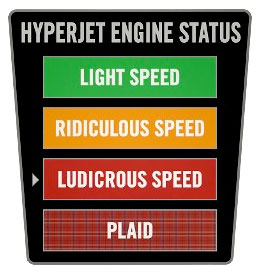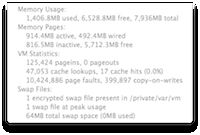
I have a quaint but very effective technique to prevent my spending too much money on gadgetry - I look at the stuff I use and upgrade it gradually over the years, only replacing things when they are in a state that other people would probably classify as being “long in the tooth”.
My current home computer setup is fairly basic - besides miscellaneous legacy boxes, I have a dual screen Mac mini that I currently spend very little time in front of (largely due to a hiatus in my photography habits) and a perfectly serviceable unibody MacBook. It is the late 2008 model, made when Apple was re-segmenting their laptop offering and, as some would put it, the best consumer MacBook ever.
In my long quest for a machine that would suit my newfound parenting lifestyle (where you’ve got to start and drop computer-related things at a moment’s notice) I’ve tried replacing it with all sorts of netbooks more than a few times, but it was only when the iPad came along that I found a suitably speedy and flexible complement.
However, that laptop is still the machine I reach for when I need to do something more complex with code (be it Xcode, a command prompt or tweaking a source tree). The iPad is practical enough for reviewing or drafting code if you have an external keyboard and Textastic (my favorite programming editor), but once you start running and debugging stuff in earnest, you need different tools - which is why I’ve been considering getting a MacBook Air for a while.
After all, who doesn’t want to get a small, lightweight and almost completely silent machine that can double as a coffee tray and bread slicer?
But the prospect of spending roughly €1300 to get one that I could actually use - that is, with more than 64GB of storage and at least 4GB of RAM - is daunting, and it would still be sub-optimal in the sense that it would not make for a significantly good experience.
So I’ve been considering upgrade options for the MacBook for some time now (if I recall correctly, since October or so), and had set my sights into getting an SSD and twice as much RAM (4GB instead of the relatively piddling 2GB it came with).
And when, all of a sudden, I found that my home MacBook could support 8GB of RAM and that Crucial was doing a special on 4GB DIMMs. Bit of a no-brainer, really.
Then l started looking at reviews and prices for SSDs, and eventually ordered myself a 120GB OCZ Vertex 2 on the basis that it was a good enough compromise between performance, price and storage capacity (I had 170GB free out of the 250GB my MacBook shipped with).
All told, both upgrades cost me around a quarter of the price of a new Air, and either of them is… awesome.
The RAM arrived nearly a full week before the SSD, and it had such a dramatic impact on performance right off the bat that I did what any full-blooded geek would do - I bought another set of 4GB DIMMs to upgrade the office Mini to 8GB as well, and would probably have gotten another set for my work machine if it wasn’t crossing the invisible line between work and personal stuff.
Things were positively zippy, and, most noticeably, my battery life was dramatically extended (undoubtedly due to the utter lack of virtual memory and swapfile usage).

Fast forward a few days, and there I was, popping in the SSD. Given the amount of flotsam and jetsam in the hard drive (including echoes of my previous laptops, sequentially cloned upon one another), I decided to put it aside for a while and start from scratch.
After installing the OS, selected bits of iLife (essentially iPhoto and iMovie for very casual use), Office 2011, iWork, Xcode 4 and a few other essentials (more on those later), I waited a while until MobileMe and Dropbox did their thing, and came back to find an almost seamless clone of my usual work environment (yeah, I’m one of those people who actually use MobileMe’s preferences syncing mechanism, and nearly all my UNIX “dot files” are in Dropbox, so every machine I use feels the same).
There is, however, a very significant difference - the machine responds so smoothly that you’d think it was one of those massive quad core iMacs Apple uses to demo stuff during their keynotes.
I started enjoying myself when the machine booted in a fraction of the usual time, was flabbergasted when Spotlight responded instantly to a query, but was floored when Xcode popped up as if it were no more substantial that a terminal window.
In terms of tweaks, I’ve set up TRIM Enabler (and Apple be darned if they don’t add support for generic SSDs in the future), revisited this piece to check if my instinct on disabling hibernation was correct, and have left it at that.
I have no plans to do benchmarks beyond the “wow, that was fast” tests I’ve cobbled up for my general use (mostly compiling1 or running odd bits of code and doing a whole lot of editing and debugging), but this is by far the most significant upgrade I’ve ever done on a Mac - the overall feeling is that this 2008 MacBook is solidly trouncing a brand new 2010 MacBook Pro (my work machine) in just about every meaningful way.
Of course, this is based on my usage patterns at home, and obviously anything that is CPU-bound suffers a bit (although a 2.4GHz Core 2 Duo is not exactly a slouch), but having mastodons such as Word and PowerPoint at my beck and call and without any performance degradation whatsoever is going to spoil me so thoroughly that any other machine is going to seem ridiculously slow from now on.
-
FYI, ImageMagick downloads and builds in 2.3 minutes from a cold start using brew, which is less than half of what it used to take before. Other less complex stuff is virtually instant. ↩︎